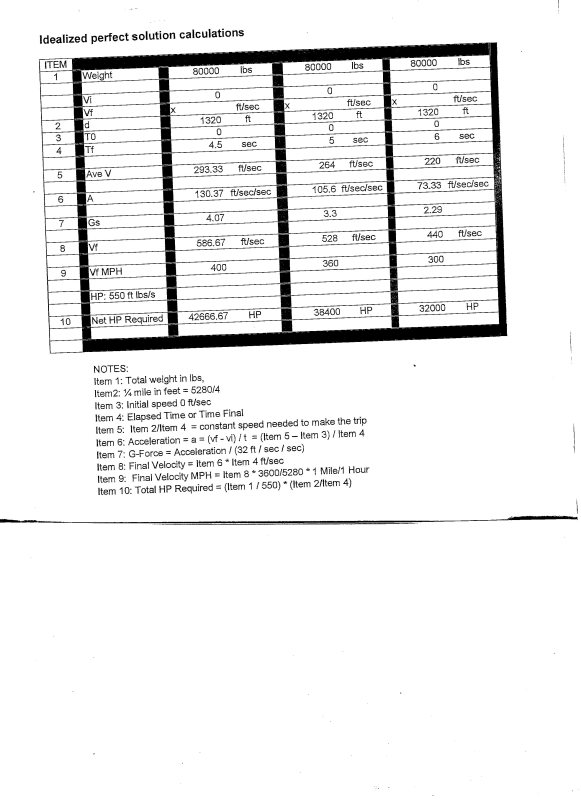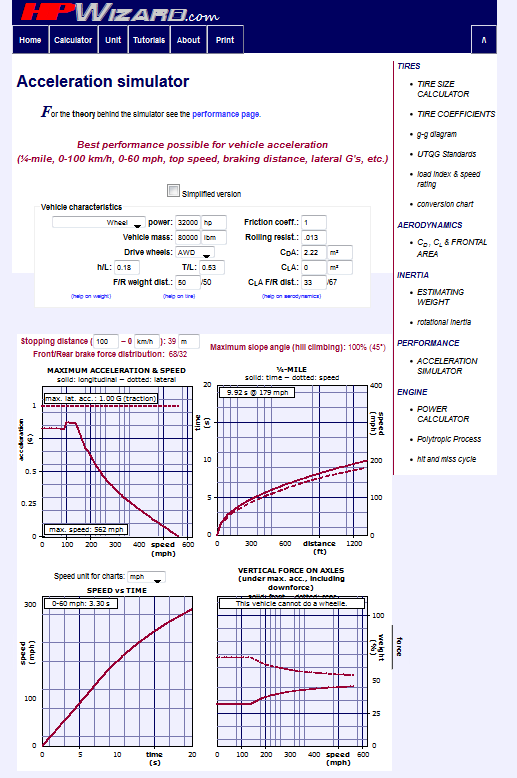One day I was thinking about muscle cars and tractor pulls. What would you need to take a semi-tractor and turn it into a dragster? Obviously you would need a heck of a powerful engine of some kind to start with. Massaging the problem a little bit, I asked myself, "What would happen if you take an extended wheel base semi-tractor, mount a 50,000 pound flywheel cylinder and spin it up to 10,000 RPM and then pop the clutch to the drive wheels. What would happen if all that stored up energy were suddenly released?
It seemed reasonable that with enough gears, a stock semi-engine could be used to gradually bring the cylinder up to almost any speed desired. That it might be able to put a 1,000,000 potential HP into the cylinder. 1,000,000 HP / 80,000 pounds of vehicle weight would give you 125 HP to drive 1 pound of weight. I don't deal with these sort of classical physics computations on a regular basis, nor do I know that much about materials and mechanics. Would the whole thing just explode with basketball sized shrapnel flying all over the place, or could the semi-dragster be designed to handle it and shoot down down the drag strip? I don't know about you, but I'd pay good money to see a semi go from 0-200+ MPH within a quarter mile.
While this is an interesting problem, there are some serious applications I can see that could benefit from a sudden burst of energy, harnessed to do a brute-force type of event. The thing is, if you couldn't build an 80,000 lb dragster as a starting point, then these other applications probably wouldn't be feasible, either.
What do you think?
It seemed reasonable that with enough gears, a stock semi-engine could be used to gradually bring the cylinder up to almost any speed desired. That it might be able to put a 1,000,000 potential HP into the cylinder. 1,000,000 HP / 80,000 pounds of vehicle weight would give you 125 HP to drive 1 pound of weight. I don't deal with these sort of classical physics computations on a regular basis, nor do I know that much about materials and mechanics. Would the whole thing just explode with basketball sized shrapnel flying all over the place, or could the semi-dragster be designed to handle it and shoot down down the drag strip? I don't know about you, but I'd pay good money to see a semi go from 0-200+ MPH within a quarter mile.
While this is an interesting problem, there are some serious applications I can see that could benefit from a sudden burst of energy, harnessed to do a brute-force type of event. The thing is, if you couldn't build an 80,000 lb dragster as a starting point, then these other applications probably wouldn't be feasible, either.
What do you think?


